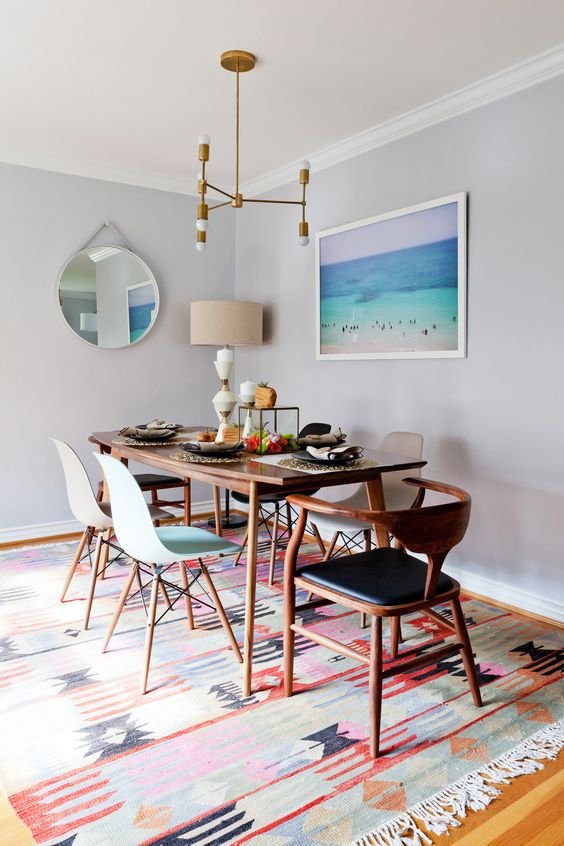5 rules to finding the perfect rug this winter
The cold weather has finally hit (where was Autumn?!), and this usually means an increased intake of hot chocolate/mulled wine and cosy couch sessions involving a good book/Netflix. With all this extra time spent indoors, now is the time to rug up – quite literally.
So, how do you introduce the perfect rug?
There are many uses for rugs in interiors. Not only can they keep your feet warm and your timber floors protected, they can also define a space or even substitute wall art.
The right rug has the power to instantly improve a room – and the right amount of pattern, colour and texture is the essential ingredient to creating a perfect personalised interior.
With the ability of a rug to complete an area, choosing the right one can be a lot of pressure. Apart from being time consuming, the wrong decision – apart from looking awkward and out of place – can be a very expensive one. It’s safe to say that selecting a rug is something you want to do well.
Bigger is better
A well-sized rug can define living zones in an open-plan layout, and a well-placed rug should bring all the other furniture in the room together. The golden rule? Measure, measure and measure again – there are no prizes for guessing the size required. A rug that’s too small will look like it’s floating, and, unless you’re trying to create the magic carpet look, will look cheap no matter how much it cost.
Think outside the rectangle
Think rugs only come in rectangles? Think again. Circular rugs can look particularly striking against angled décor – or even layered on top of another rectangular rug. If you have room for more than one, let your creativity run wild. Create harmony by using the same shape in a different size or colour – or juxtapose different shapes to create contrast.
Embrace patterns and colour
Have a neutral space that needs some “oomph”? A rug is a great way to add a pop of colour or create a focal point in a room. Add personality with a brightly coloured rug or choose a striking pattern to spruce up an otherwise monochrome interior. On the flipside, if your furniture already has a lot going on, try a solid colour or neutral rug to bring things down to earth.
Keep it practical
Remember to consider not only the look of the rug, but also the material and the area it will be occupying. Hallways with high foot traffic need durable options, while bedrooms and dining spaces are less susceptible to wear and tear. A delicate designer rug may look dashing in the front corridor – but it won’t stay that way for long. Be practical with your rug choices and opt for hardier materials or darker tones to mask scuff marks.
Think of every space
A rug can help finish off a room, and by this we any room – be it the bathroom, kitchen or even laundry. A bedroom rug can establish the area as a quiet, peaceful retreat, while an entryway runner will set the tone for the surrounding spaces – and a stylish rug in the bathroom will elevate it beyond the typical bath mat.






